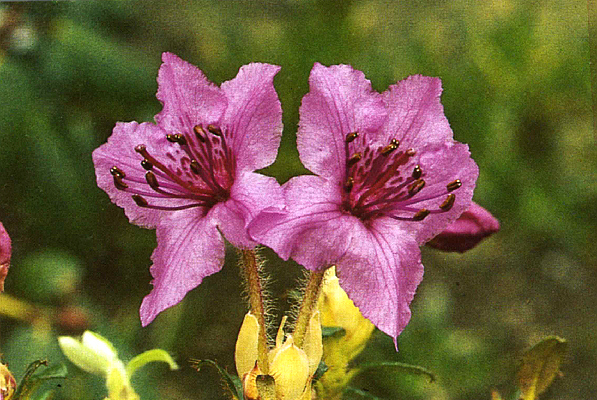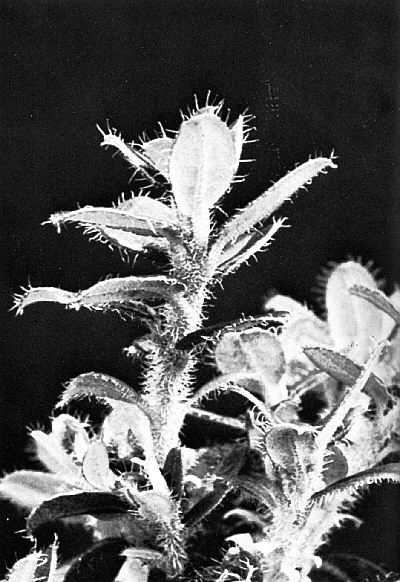Rhododendron Prostratum
Arthur P. Dome, Seattle, Washington

|
R. prostratum
Photo by Art Dome
|
|
|
|

|
R. prostratum
bristles
Photo by Art Dome
|
|
Rhododendron prostratum
is another member of the Saluenense Series that can be a very desirable and interesting garden subject. One can enhance its desirability by starting with a small plant. Grow it in a rich, light, moist media and pinch the terminal shoots frequently to promote branching. After a good base of many terminal shoots have been established it usually maintains itself as a neat growing shrublet.
R. prostratum
has more of an ascending type habit of growth than a prostrate one. In some areas forms of
R. keleticum
have been grown under the name of
R. prostratum
mainly because of its prostrate habit.
One of the first points to look for in determining the identity of
R. prostratum
are the bristles that cover the branchlets (see illustration) versus none at all on
R. keleticum
or
R. radicans
. However, don't confuse it with
R. chameunum
which has a more robust, upright habit of growth with larger leaves.
The blooms of
R. prostratum
are usually lighter in color than those of
R. keleticum
. They also have fewer spots which are usually lighter in color and the individual blooms are not quite as flat. The flower stalks of
R. prostratum
are also quite bristly (see illustration) while those of
R. keleticum
have none and tend to be on the scaley side.
R. prostratum
can be propagated readily from cuttings.

